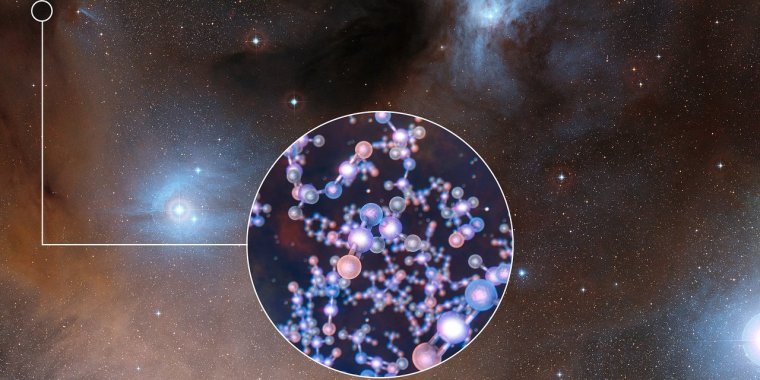| News / Space News |
ALMA Finds Ingredient of Life Around Infant Sun-like Stars
Two teams of astronomers, one from INAF-Osservatorio Astrofisico di Arcetri in Florence, Italy and the second from Leiden Observatory in the Netherlands and from University College London, United Kingdom, have harnessed the power of the Atacama Large Millimeter/submillimeter Array (ALMA) in Chile to detect the prebiotic complex organic molecule methyl isocyanate in the multiple star system IRAS 16293-2422.

ALMA finds ingredient of life around infant Sun-like stars. ![]()
ALMA’s capabilities allowed both teams to observe the molecule at several different and characteristic wavelengths across the radio spectrum. They found the unique chemical fingerprints located in the warm, dense inner regions of the cocoon of dust and gas surrounding young stars in their earliest stages of evolution.
Each team identified and isolated the signatures of the complex organic molecule methyl isocyanate. They then followed this up with computer chemical modelling and laboratory experiments to refine our understanding of the molecule’s origin.
IRAS 16293-2422 is a multiple system of very young stars, around 400 light-years away in a large star-forming region called Rho Ophiuchi in the constellation of Ophiuchus (The Serpent Bearer). The new results from ALMA show that methyl isocyanate gas surrounds each of these young stars.
Earth and the other planets in our Solar System formed from the material left over after the formation of the Sun. Studying solar-type protostars can therefore open a window to the past for astronomers and allow them to observe conditions similar to those that led to the formation of our Solar System over 4.5 billion years ago. (ESO)
YOU MAY ALSO LIKE




